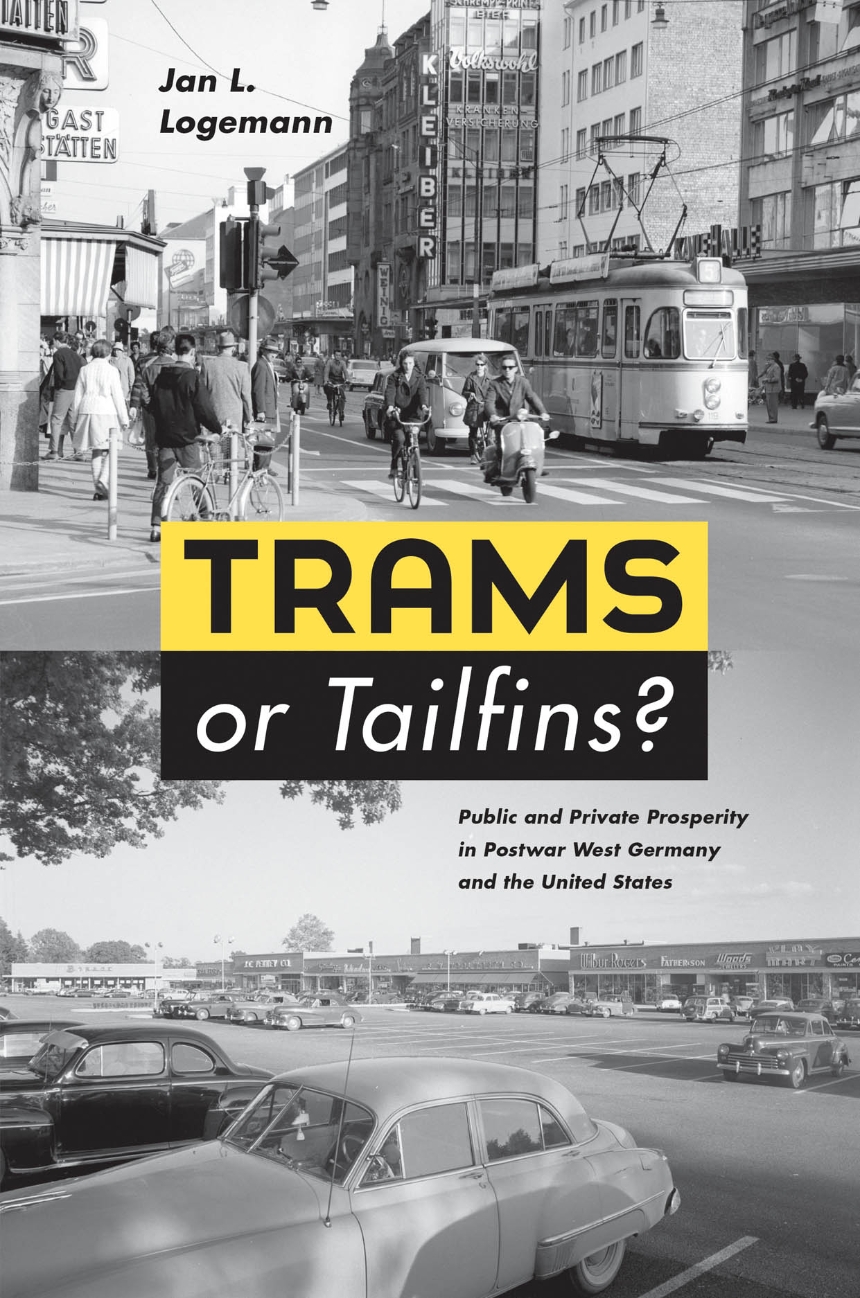Trams or Tailfins?
Public and Private Prosperity in Postwar West Germany and the United States
9780226491493
9780226491523
Trams or Tailfins?
Public and Private Prosperity in Postwar West Germany and the United States
In the years that followed World War II, both the United States and the newly formed West German republic had an opportunity to remake their economies. Since then, much has been made of a supposed “Americanization” of European consumer societies—in Germany and elsewhere. Arguing against these foggy notions, Jan L. Logemann takes a comparative look at the development of postwar mass consumption in West Germany and the United States and the emergence of discrete consumer modernities.
In Trams or Tailfins?, Logemann explains how the decisions made at this crucial time helped to define both of these economic superpowers in the second half of the twentieth century. While Americans splurged on private cars and bought goods on credit in suburban shopping malls, Germans rebuilt public transit and developed pedestrian shopping streets in their city centers—choices that continue to shape the quality and character of life decades later. Outlining the abundant differences in the structures of consumer society, consumer habits, and the role of public consumption in these countries, Logemann reveals the many subtle ways that the spheres of government, society, and physical space define how we live.
352 pages | 12 halftones, 1 figure, 8 tables | 6 x 9 | © 2012
Economics and Business: Economics--History
History: American History, European History
Reviews
Table of Contents
List of Figures
List of Tables
Abbreviations
Acknowledgments
List of Tables
Abbreviations
Acknowledgments
INTRODUCTION Divergent Paths to Mass Consumer Modernity: Comparing West Germany and the United States
PART 1 State––Private Consumption and the Framework of Public Policy
Introduction to Part One
1 Politics of Mass Consumption: Balancing Public and Private Consumption in Postwar West Germany and the United States
2 Public and Private Consumption in Affluent Societies: Divergent Approaches to Consumer Policy during the 1960s
PART 2 Society—the Social Significance of Consumption
Introduction to Part Two
3 What the People Want: Consumer Aspirations and the Social Meaning of Consumption
4 Menace or Promise? Credit Financing in Two Postwar Consumer Societies
PART 3 Space—Urban and Suburban Spaces of Consumption
Introduction to Part Three
5 Urban and Suburban Living: Public Development and Private Consumption
6 Shaping the Postwar Consumer City: Urban and Suburban Patterns of Postwar Retailing
CONCLUSION
Notes
Index
